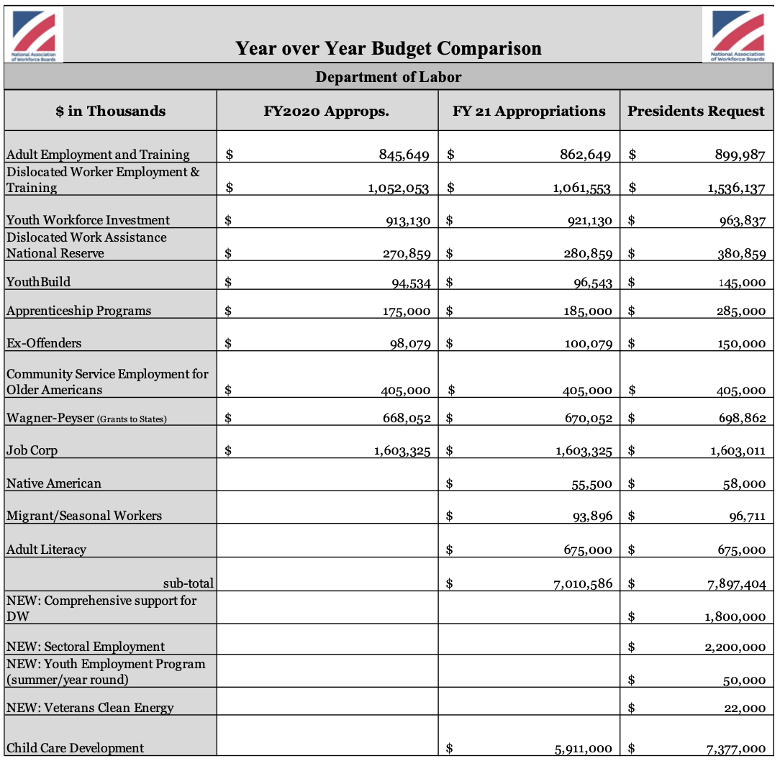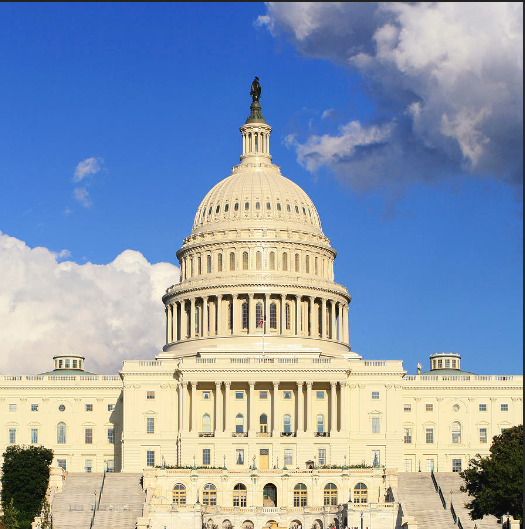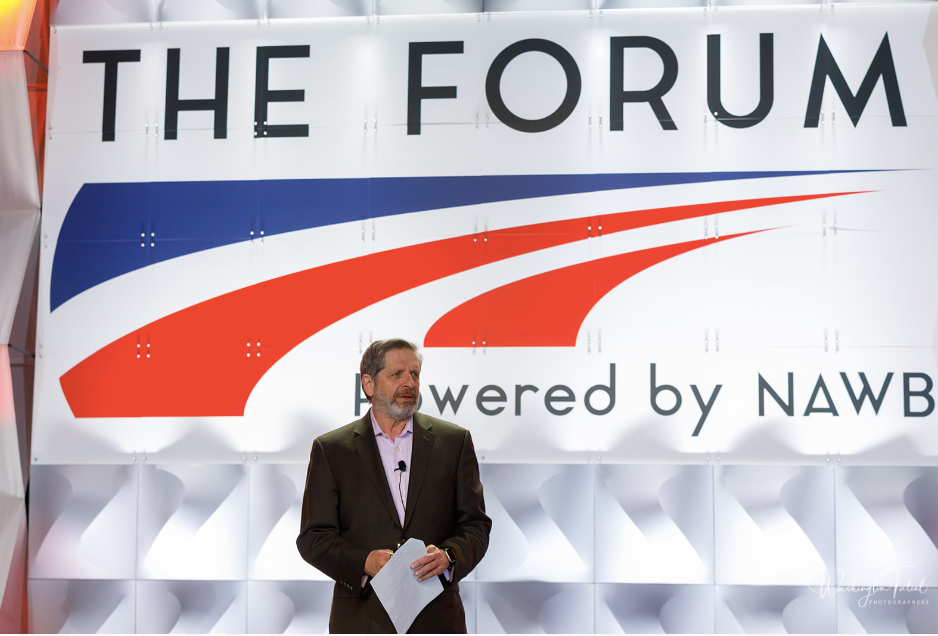Blog Layout
Initial Thoughts on the President’s FY22 Budget Proposal
President Biden released his FY 2022 budget request today, providing a more detailed look at the administration’s spending priorities for the coming year. The request includes an increase for WIOA programming, and an initial outline for the American Jobs Plans which will likely take shape as part of a wider infrastructure package, pending further Congressional action. As a reminder, the President’s request is usually the beginning of the appropriations process, so there is still a lot of additional action yet to come in the House and Senate as lawmakers consider this proposal and craft their own spending proposals.
Still, the budget is an indication of what the Administration is thinking. In the case of the current Administration, the budget needs to be read as both the “traditionally” funded activities of the Departments and Agencies composing the federal government and as a precursor for where the Administration would like Congress to go with regards to investments in the nation’s infrastructure. Aspects of President Biden’s infrastructure proposals—in the form of the American Jobs and Families plans— are scattered throughout the FY22 budget in an effort to make clear that the large, targeted increases envisioned by these proposals have a connection to ongoing federal funding efforts, including the federally funded workforce development system authorized by WIOA.
Overall WIOA sees proposed increases in FY22, particularly in the funds for dislocated workers, both in the formula grants and in the national reserve. The proposal also calls for two (2) new initiatives, National Youth Employment (NYEP) and Veterans’ Clean Energy Training, which includes spouses. The NYEP includes summer and year-round employment activities for youth, as well as support services such as transportation and childcare. We applaud this – it’s been a long while since we have seen summer youth funds and it’s been a high priority to re-fund, especially in light of the current youth unemployment crisis.
With regards to the American Jobs Plan, here is what the budget further envisions for this proposal:
“…[The American Jobs Plan] is an investment in America that will create millions of good jobs and rebuild our country’s infrastructure. It will invest in Americans and deliver the jobs and opportunities they deserve and will address long-standing and persistent racial injustice.
Workforce development will play a critical role in both rebuilding the economy, especially after the tremendous loss of jobs due to the pandemic, and in developing the workforce that will build the new backbone of our country. As more people look for jobs, rejoin the workforce, or seek out new opportunities in a changing economy, there will be a greater need for quality job training and education and meaningful credentials so workers can earn higher wages, develop rewarding and lasting careers, and improve their economic well-being.
President Biden’s jobs plan responds to employer demand for skilled labor and improves equity. These investments will be a link for workers to in-demand, high quality jobs and provide transferable skills. The proposal focuses on workforce development models with a proven track record, including apprenticeship, sector-based training, and intensive career services. Racial equity is also prioritized within this proposal—workforce investments will be targeted to underserved groups, including people of color, individuals with disabilities, justice-involved individuals, and low-income people.
For the Department, this includes investments of $81.5 billion over 10 years, including: the creation of a new $22 billion Sectoral Employment through Career Training for Occupational Readiness (SECTOR) program, which will spur the creation of high-quality training programs in growing sectors; $18 billion for a new Comprehensive Supports for Dislocated Workers (CSDW) program to provide comprehensive supports to enable dislocated workers to participate in high-quality training programs; $10 billion to vastly expand Registered Apprenticeship (RA) and the pathways into these proven earn-and-learn programs; $9 billion for competitive grants to build the capacity of the community college system to deliver high-quality training programs; $8 billion for states to greatly expand access to intensive, staff-assisted career services offered through the Employment Service network; $4 billion for states to provide subsidized jobs to workers with barriers to employment, especially public assistance recipients; $1 billion to expand workforce development services to justice-involved individuals; $2 billion to support the phase-out of the 14(c) subminimum wage program and provide support to states to expand access to competitive, integrated employment opportunities and fair wages for workers with disabilities; and $7.5 billion for DOL enforcement and worker protection activities to ensure employers are providing workers with good jobs -- including jobs with fair and equal pay, safe and healthy workplaces, and workplaces free from racial, gender, and other forms of discrimination and harassment -- and to combat misclassification of employees as independent contractors…”
More analysis will be released soon and please be sure to join us
for the next coffee & conversations session on June 10th at 2PM ET for more details.


By Stacy Heit
•
12 Dec, 2023
NAWB responded to the latest WIOA reauthorization proposal on Dec. 12, 2023, in a letter addressed to the chair and ranking member of the House Education and the Workforce Committee. Read the full letter below. Dear Chair Foxx and Ranking Member Scott, On behalf of the National Association of Workforce Boards (NAWB), representing more than 590 state and local workforce development boards (WDBs) across the nation, I am writing in response to the committee’s recent introduction and consideration of H.R. 6655, A Stronger Workforce for America Act (ASWA) to outline our organization’s reservations regarding core aspects of this draft proposal as well as to highlight other, more encouraging, elements of the legislation that we believe would have a positive impact on WDB operations and the wider publicly funded workforce system. Reauthorization of the Workforce Innovation and Opportunity Act (WIOA) is of critical importance to our organization and our members, particularly at a time of significant change in the wider economy and labor markets. Updating the primary federal investment in WIOA provides Congress an important opportunity to make changes to this legislation to ensure that workers, learners, and employers have a system that is nimble, flexible, and responsive to their needs. As ASWA continues to advance through the legislative process, we look forward to working with you as you and your colleagues further refine and build upon this draft proposal using the recommendations and perspectives outlined throughout this letter. NAWB shares your desire to get more training out of the publicly funded workforce system. However, we strenuously disagree with the proposed strategy contained in ASWA—a narrowly defined federal training mandate—to achieve this vision for the future. Such a mandate is at odds with the state and local governance structure that has long been a hallmark of the primary federal investment in workforce development. Congress has long empowered states and local entities to deliver the programs and services authorized by WIOA due to their proximity to the people being served. State and local WDBs’ understanding of the unique employment needs of the diverse communities they serve is necessary to effectively meet the challenges facing individuals with barriers to employment. A federal mandate, however, removes agency from states and local entities to do this in ways that make sense for their communities, regardless of the actual needs of the populations that must be prioritized by the publicly funded workforce system. As you know, the populations that are most frequently served by WIOA face some of the greatest barriers to finding and obtaining family-sustaining employment. These populations are not often in a position to immediately enter into education and skills development programs without significant wraparound services and supports to ensure their success. The proposed mandate’s structure does not acknowledge this important reality and has the potential for many unintended consequences that are likely at odds with this stated core goal of ASWA. This is especially true because the mandate proposed in this draft legislation is narrowly defined and does not allow for the provision of supports to ensure participant success. If enacted as currently constructed, this mandate has the potential to prevent individuals that need help from WIOA the most from accessing the supportive services and resources they need to be successful in education and skills development experiences that lead to better opportunities for themselves and their families. Put more plainly—while well intentioned, the currently proposed training mandate does not adequately address the need to provide the supports necessary to ensure participant success. Non-completion of mandated levels of training will not help workers nor does it help employers seeking to meet their talent needs. NAWB is also concerned that these challenges would be exacerbated by the proposed funding levels contained in the legislation. While we are appreciative of the new funding from H-1B visa fees envisioned in this legislation for Individual Training Accounts (ITAs) to address the requirements of the proposed training mandate, these funds are variable on an annual basis and are likely to ebb and flow each year based on changes to policy contexts that are difficult to predict. In addition, ASWA proposes only modest increases in authorized appropriations for Title I funding despite historic levels of underinvestment and disinvestment in WIOA and predecessor legislation over the past several decades—the primary reason why current levels of training provided by the WIOA system remain so low. ASWA also increases the allowable percentage of funding that can be reserved by the Governor to 25 percent of all WIOA Title I formula funding, including for the creation of a Critical Industry Skills fund. While we are appreciative that LWDBs are eligible applicants for some of these funds, these changes will further reduce the resources available at the local level to deliver training services newly mandated by ASWA. NAWB agrees that providing upskilling opportunities for workers is an important employment strategy for states which is why we have consistently called for greater local flexibility to make this a reality for more workers. As currently structured, however, ASWA would allow other federal funds, including the Governor’s existing 15 percent reserve funding, to be used to meet the state matching requirement for the creation of such an initiative. This will further reduce the ability of the federal investment to leverage additional state funding for training and employment opportunities for individuals. We therefore recommend that this matching requirement be narrowed to only allow nonfederal state funding to fulfill this requirement or eliminated entirely. For reasons outlined above, NAWB strongly opposes ASWA’s fifty percent training mandate and believes that it should be eliminated or substantially lowered from its current level. In addition, we believe that if a mandate is maintained as the legislative process continues, the underlying definition for what qualifies as training for this purpose be expanded to recognize the critical role supportive services have in ensuring individuals’ success in education and skills development. Our organization’s membership also has concerns regarding the redesignation process for local workforce development areas (LWDAs) proposed in ASWA. NAWB recognizes the need to ensure that LWDAs reflect the communities that they were created to serve and provide locally developed solutions to meet the needs of individuals and employers in these same communities. This is especially important as the nation has undergone dramatic transformations over the years since the time many LWDAs were first created. Yet once triggered by a Governor ASWA’s proposed redesignation process, as currently structured, would adversely impact the geography of all LWDAs in a state, even if a majority of LWDBs in the state vote against such a proposal. NAWB believes it is imperative that an option be included to maintain current LWDA designations should a majority of LWDBs in the state vote to preserve them. Despite NAWB’s reservations regarding these aspects of legislation, which we call on Congress to address as it is further considered as part of the legislative process, there were other positive elements contained in ASWA that we believe have the potential to constructively impact the publicly funded system in important and sometimes profound ways: - Clarifying LWDBs’ budgetary authority over the administration of adult, dislocated worker, and youth workforce development activities in a LWDA. - Improved flexibility to use virtualized services and affiliated sites to deliver one-stop services, along with allowing LWDBs to serve as one-stop operators under certain circumstances. While NAWB appreciates some of the changes made to funding of one-stop infrastructure costs, we strongly believe that dedicated funding is needed for this purpose, rather than the proposed increased Title I contribution, which would have the additional benefit of freeing up more funding for training and supportive services for eligible individuals and populations. - Increasing flexibility for LWDBs to provide reskilling and upskilling opportunities for individuals and workers. - The provision of professional development opportunities for staff and members of state and local WDBs. - A clear emphasis throughout the draft on skills-based hiring initiatives and other thoughtful strategies to clear the path between job seekers and employers, including changes to skills assessments conducted during the initial intake process to reward prior work and learning experiences. - Expanding the definition for foundational skills needs to include digital literacy skills, which we believe is an important reflection regarding the role of these competencies in an increasingly digital-first world. - Formally defining co-enrollment as a way to better promote this strategy as a systemwide priority to help more individuals access and receive the services they need. - A significant overhaul of how eligible training providers (ETPs) are identified, what criteria can be used to establish and maintain provider eligibility, and how related ETP lists (ETPLs) are leveraged to ensure quality. To further improve upon this aspect of ASWA, NAWB suggests building on these positive aspects and establishing clear thresholds and related incentives to establish multistate reciprocity agreements and ensure that providers of quality training opportunities can deliver programs and services to more individuals regardless of where they may reside. - The codification of the Workforce Data Quality Initiative (WDQI) including additional funding via the national dislocated worker reserve fund to increase the program’s funding level. These resources are critical to building the workforce data infrastructure needed to make many of the improvements envisioned elsewhere in ASWA a reality. We are also greatly appreciative of the changes made in ASWA that will enhance access to wage record information needed to reliably and accurately assess program and system performance. - Changes to the Title I youth funding stream, including a more inclusive definition for opportunity youth (OY) and the ability to use ITAs for youth populations. While we were encouraged to note that the mandated split of funds between eligible youth populations has now been modified to be statewide, we believe greater flexibility should be provided regarding this requirement. - Data transparency requirements, including an emphasis on the use of linked, open, and interoperable data schema throughout the draft that will dramatically improve workforce data quality and subsequent use by a variety of stakeholders, including promoting a key tenet of WIOA and carried forward by ASWA—informed consumer choice. - Allowing for public outreach and marketing of federally funded workforce initiatives to increase the public’s awareness of and familiarity with these opportunities. Importantly, this list is not exhaustive and there are other elements of ASWA that are not included above that NAWB has been encouraged to note. At the same time, we understand that this proposal is the first step in a wider reauthorization process. We look forward to working with you and your colleagues in the House, as well as the Senate, to build upon the important and encouraging elements contained in this draft proposal and noted elsewhere in this letter. Should you have any questions regarding these perspectives or NAWB’s wider policy recommendations related to WIOA please do not hesitate to contact myself at (turner-littleb@nawb.org) at your convenience. Sincerely, Bradford Turner-Little CEO National Association of Workforce Boards

By Stacy Heit
•
07 Dec, 2023
NAWB shared its support for the Advancing Research in Education Act (AREA)—legislation that would reauthorize and make important updates to the Education Sciences Reform Act (ESRA). Read the full text below. Dear Chair Sanders and Ranking Member Cassidy, On behalf of the National Association of Workforce Boards (NAWB), representing more than 590 state and local workforce development boards (WDBs) across the nation, I am writing in strong support of S. 3392, the Advancing Research in Education Act (AREA)—legislation that would reauthorize and make important updates to the Education Sciences Reform Act (ESRA). If enacted this bipartisan legislation would significantly improve the research and data functions carried out by federal agencies in support of the full education and workforce development continuum. LWDBs oversee, at the local level, activities and programs within the publicly funded workforce system and as such have a deep appreciation for the need for quality, timely, and actionable data to support workers’ many needs on their journey to family-sustaining employment. We greatly appreciate the committee’s bipartisan recognition that efforts to more fully understand and improve education must necessarily include a stronger focus on the subsequent labor market and workforce outcomes of students. Understanding what happens to students after they leave a classroom can help to align national education and workforce goals, improve the development of curriculum and delivery of instruction, and would support students as they navigate an increasingly more complex economy that is undergoing dramatic changes. NAWB was especially encouraged to note the following provisions contained in AREA that support these wider goals and objectives: - An explicit focus on postsecondary education and workforce development as a research topic for the National Center for Education Research’s development centers; - Broadening the duties and responsibilities of the Commissioner for Education Statistics to include a focus on postsecondary, workforce, and adult education, including promoting data sharing and linkages across education and training systems; - Promoting voluntary guidelines to standardize data and information and ensure interoperability which would greatly increase the utility and usability of this information for a variety of stakeholders; - Significant and much-needed reforms to the State Longitudinal Data System (SLDS) grant program, including more explicit incorporation of workforce data and related labor market outcomes, especially as it relates to the generation of accurate and timely data needed to support the implementation of the Workforce Innovation and Opportunity Act (WIOA); and - Directing federal agencies to provide technical assistance to state and local WDBs to support ongoing and effective implementation of education and workforce development investments. Encouragingly there were many other aspects of S. 3392 that NAWB was pleased to note and we are incredibly grateful for the time and energy the committee has devoted reauthorizing ESRA so far. We look forward to working with you and your colleagues to advance this important proposal and look forward to its enactment. Sincerely, Bradford C. Turner-Little, CEO National Association of Workforce Boards
National Association of Workforce Boards | All Rights Reserved |
Created by Olive + Ash.
Managed by Olive Street Design.









